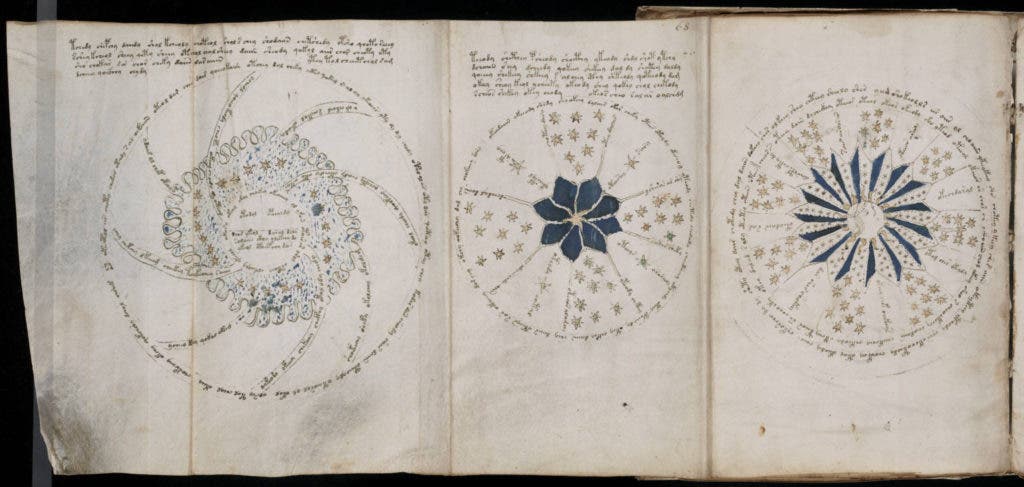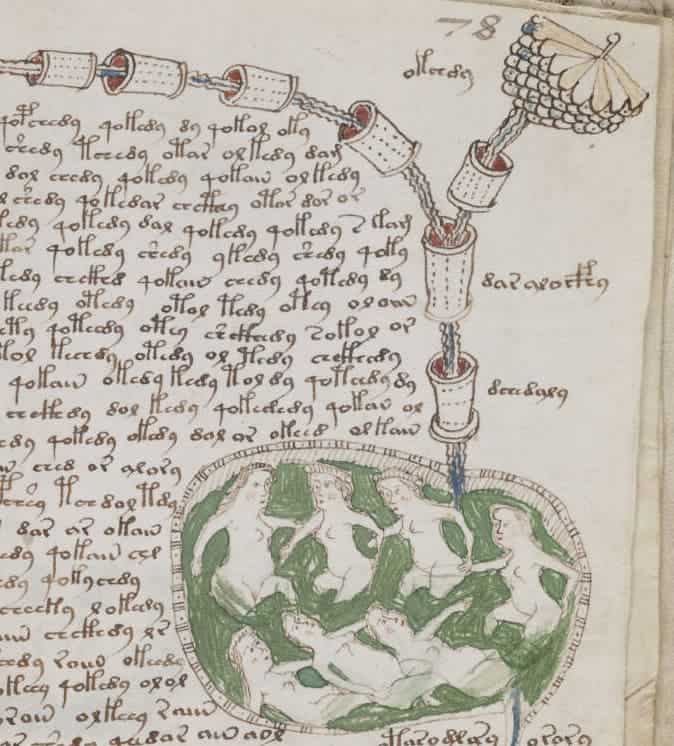A tiny publisher in Spain has been given permission to copy the 15th-century Voynich Manuscript, one of the world’s most mysterious and least understood books. Hopefully, making the book available to the public will help decipher its elusive contents.

Image belongs to the public domain.
Curiosity is an incredibly powerful force, one that the Voynich Manuscript awakes like almost no other work. This book was written in the 15th-century in a language either unknown to us or shrouded in code. Throughout the centuries some of the brightest minds alive, including top cryptologists such as William Friedman who helped break Japan’s “Purple” cipher during the second world war, have tried to make sense of it all — though never succeeded. The aging work is currently housed in the Yale University’s Beinecke Rare Book & Manuscript Library vault, and very few people are allowed to actually touch it. Those that did, such as Juan Jose Garcia, the director of the small Spanish publishing house Siloe, will never forget the book’s allure.
“Touching the Voynich is an experience,” Garcia told Agence France-Presse. “It’s a book that has such an aura of mystery that when you see it for the first time … it fills you with an emotion that is very hard to describe.”
Garcia fought tooth and nail to get permission to touch the book, and that’s not all. After a 10-year appeal for access, Siloe (which specializes in making facsimiles of old manuscripts) has secured the rights to “clone” the document. Exactly 898 replicas of the manuscript will be re-created down to the last detail, every smudge, crease, or hole in paper meticulously copied. Because nobody has any clue what’s actually in the book, these little details might hold the key to deciphering it — or they might be just that, smudges, creases, and holes. With more eyes examining the book, hopefully someone will soon find out.
What we know so far
Not much, to be honest. The book was initially attributed to a 13th century English Franciscan friar and suspected wizard Roger Bacon, whose interest in alchemy finally landed him in jail. Once carbon dating became available, the manuscript’s creation was placed between 1404 and 1438, and then speculation abounded — everything and anything from da Vinci, to aliens, has been suggested as the author of the book. As Garcia told the AFP, the author could have been a genius, but “could also have been a sadist, as he has us all wrapped up in this mystery”.

Since its author is unknown, the book is named after its finder, Wilfrid Voynich, a Lithuanian antiquarian who reportedly purchased it in 1912 from Italian Jesuits, and propelled it into the limelight.
Not much bigger than a modern-day paperback, the manuscript is more than 200 pages long and includes several large fold-outs. The pages are covered in drawings that extend from the borders of the page and cradle the text in colorful and surreal images of plants, human figures, and unknown constellations. The text itself is frustratingly obscure.
“It doesn’t match any other language that’s been seen in any other book,” said Reed Johnson, host of NPR’s Weekend Edition Sunday, back in 2013.
“The drawings often have labels, which would seem to offer a route to deciphering the code. But that hope has proved to be an illusion,” he says, adding that trying to decipher the code is like trying to climb a wall, but realizing all the easy hand-holds are actually just painted on, so you can never get a grip on it.
“My own experience with this manuscript has only been three years, so I’m a rank amateur,” he adds.
How this will help us learn more
Beinecke library also gets thousands of emails each month from people claiming to have decoded the book, says Rene Zandbergen, a space engineer who runs a blog on the manuscript. Visitors to their online library overwhelmingly access this piece of work.
“More than 90% of all the access to their digital library is only for the Voynich manuscript,” he said.
And it’s exactly because of this interest that Yale decided to have facsimiles done, says Raymond Clemens, curator of the Beinecke library.
“We thought that the facsimile would provide the look and feel of the original for those who were interested,” he said.
“It also enables libraries and museums to have a copy for instructional purposes and we will use the facsimile ourselves to show the manuscript outside of the library to students or others who might be interested.”
Siloe always publishes 898 copies of every work it reproduces (a palindrome number,) after their first successful venture which sold 696 copies. Each of these will sell for around €7,000 to €8,000 (US$7,880 to US$9,000) a pop, which isn’t that much when you consider the painstaking work that will go into each one. Nearly 300 copies have already been pre-ordered, confirming the huge interest people have in this work.
The high price means that while a couple of the copies will be picked up by well to do enthusiasts, the bulk of them will reach libraries and research institutions where they will be available so someone can hopefully wrap their head around the book.
It will take the company roughly 18 months to get the first copies ready, counting since April when the original in Yale was photographed. Siloe workers are now practicing their hand on mock-ups to get the script and drawings looking just right, before setting to work on the facsimiles. The paper to be used is made from a company-developed paste and will receive a special treatment so it feels like the stiff parchment of the original. All the details and imperfections will be recreated using special tools in a process kept secret by Garcia. Once complete, the pages will be put together and treated to look older.
But if you can’t wait until the copies are ready, you can go ahead and try your code-breaking skills on the digitized pages available here.


